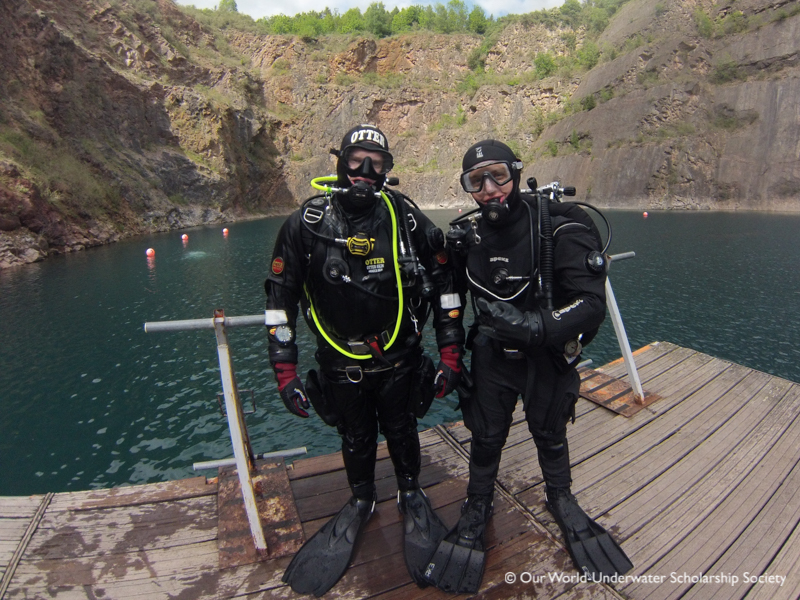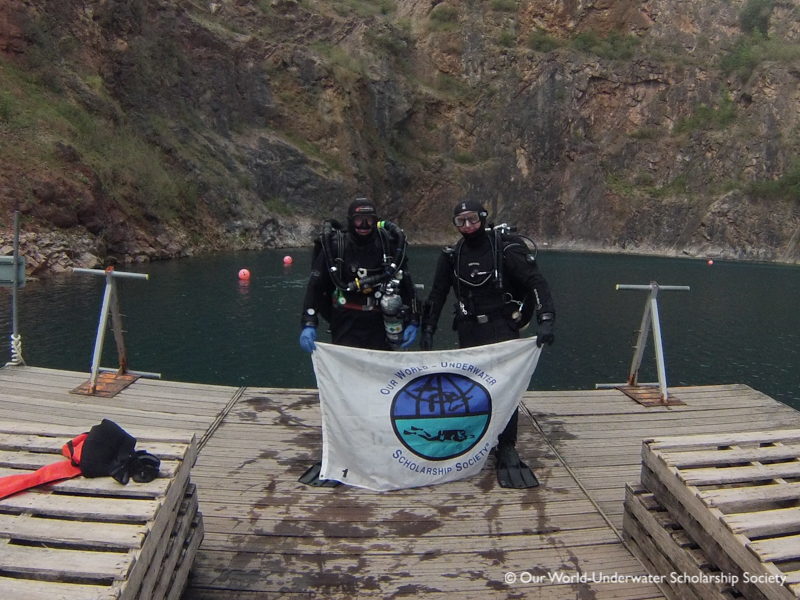———————————
PSA: Be sure to follow the new European Rolex Scholar Facebook page for more regular updates on my adventures and those of future EU scholars. 😀
———————————
“That looks mighty heavy”, I thought to myself, as Mark perched a monstrous steel twinset on top of the wooden bench, showing the set up I’d be using for the weekend. My mind continued to wonder. “Why is that hose so fantastically long?” I quickly peered down to my manual. “And what on earth is an S-drill?!”
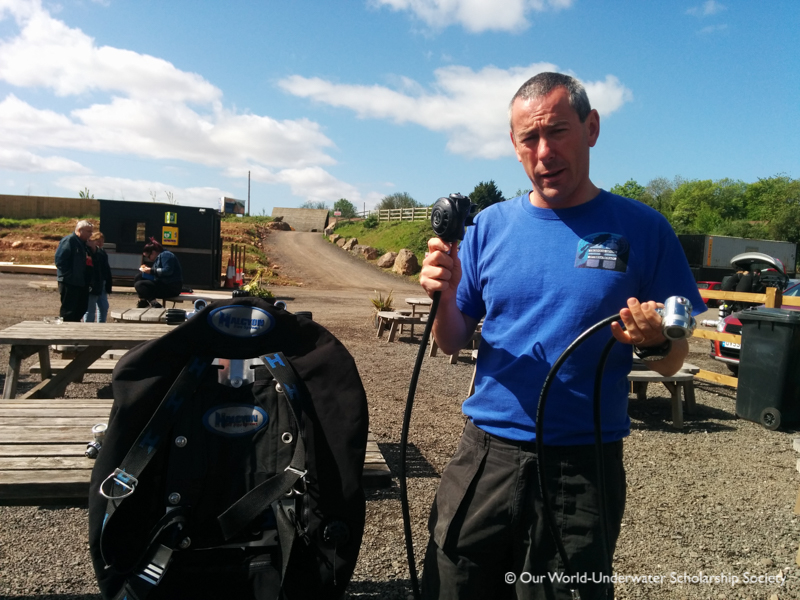
Following on from my fish-filled dives in Newquay, I continued my early-summer UK tour by heading down to the National Diving and Adventure Centre in Chepstow. My latest mission, was to complete an introductory course to technical diving under the guidance of the legendary Mark Powell of Dive Tech UK. Now I know what you’re thinking. “Danny, you’re all about marine conservation…what on earth are you doing dabbling in technical diving?” Whilst it’s true that Chepstow’s 70m+ deep quarry isn’t well known for its abundant marine life and rainbow-reefs, getting into technical diving in this popular pit still serves a major role in my largely marine conservation and media oriented scholarship year. Firstly, many of the skills and practices employed by technical divers are well-utilised by marine scientists and media divers around the world. It’s also been a good few years since I enrolled in any form of formal scuba training, so to me it seemed sensible to see technical diving as the next way to progress and sharpen my overall abilities as a scuba diver. And I won’t lie…diving deeper and venturing into places that few people visit sounds mighty cool to me (albeit a little scary)!
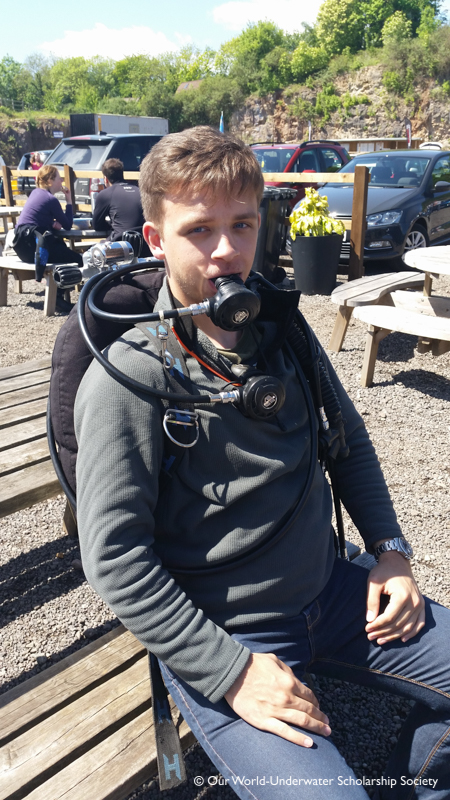

The weekend began with an introduction to the history of technical diving, what technical diving really is (and what it isn’t!), and the set-up I’d be using, manifolds and hog-loops abound. As Mark succinctly explained, there are fewer missteps that can be made in technical diving before a diver slides into the ‘Diving Incident Pit of Doom.’ The initially alien-looking tech-diving configuration is set up so as to minimise the chances of making those wrong steps to begin with. Surely enough, as Mark explained each element of the gear, it all began to make a lot of sense, and I began to wonder why everyone doesn’t dive with these configurations in general!
In between bursts of theory, we suited up and jumped in the water, sneaking in a total of four dives over the two days. My buddy Steve and I spent a lot of time getting to grips with new tech skills, such as S-drills, valve shutdowns and backward finning (something which I’m delighted to have nailed!), but we also spent time doing a lot of more familiar skills; mask removal and replacement and DSMB deployment to name a few. The critical difference here being a word that strikes fear into the heart of many a diver. TRIM. All skills had to be done hovering in the water column whilst in a strong trim position. The TDI Intro to Tech course isn’t designed to qualify you to new depths or to do crazy new things – it’s to give you a taste of the world of technical diving. But it certainly puts your diving skills to the test, with the aim of highlighting your weaknesses and the standard that’s expected to progress in this field of diving. Prior to the course, I prided myself in thinking that my trim was pretty solid, even in a drysuit. Then I saw Mark in the water. The man hovers forever motionless in the water column, like some neoprene-clad hummingbird above a platform-shaped flower. It is something to be seen to be believed.
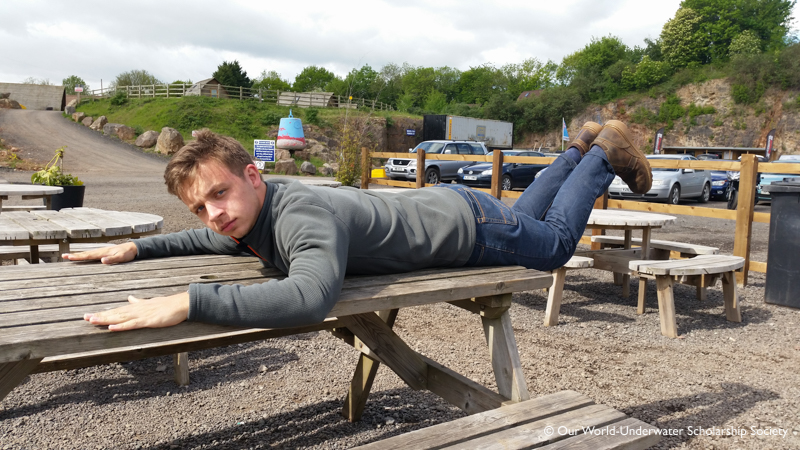

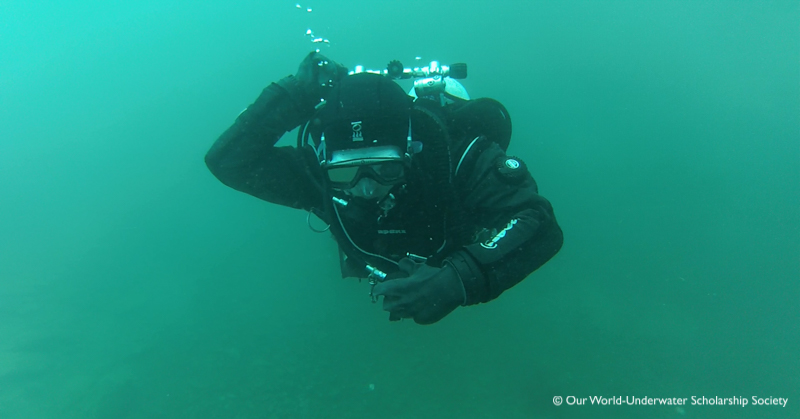
I’d like to thank Mark for being such a thorough and supportive instructor, and for generously inviting me to join his course. I’d also like to thank the gang at TDI for their generous sponsorship of this course. Whilst I will always be a fish-man at heart, I left Mark’s course with a new selection of skills, and an understanding of my weaknesses – both of which have already helped to improve my diving overall. I cannot wait to dive deeper in technical diving during my scholarship year!
